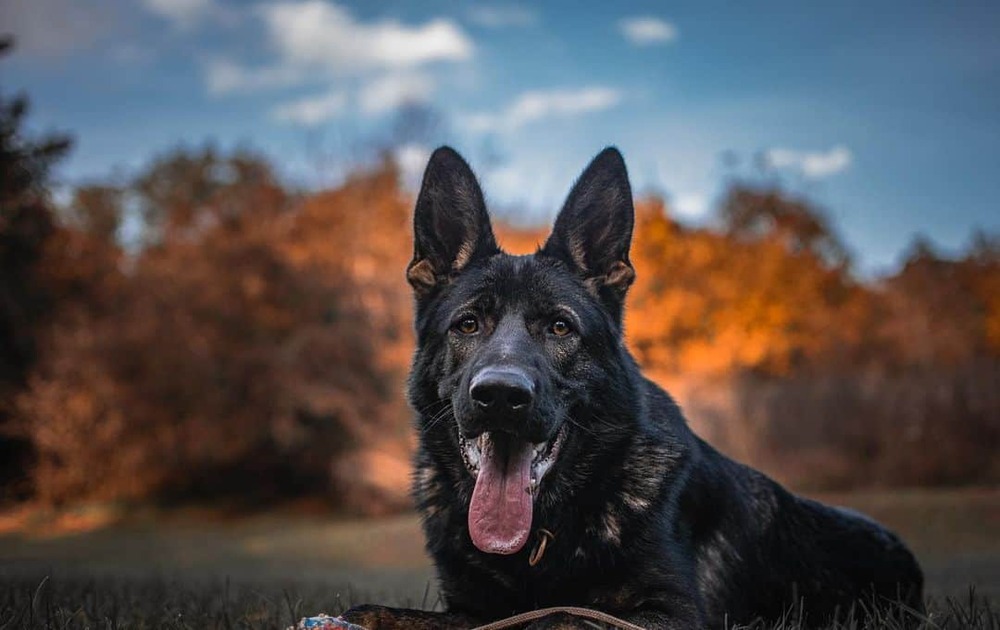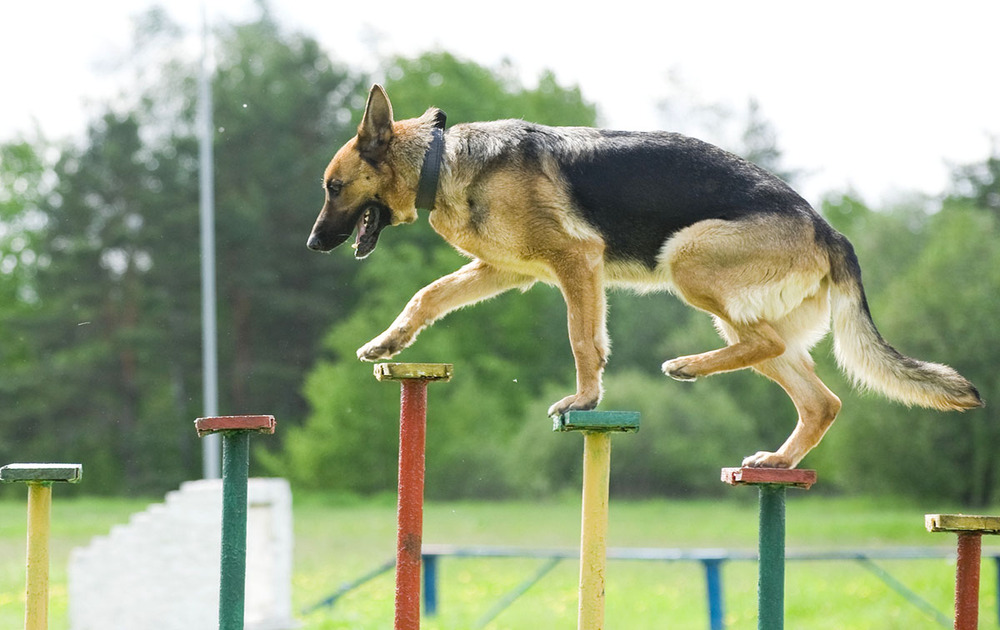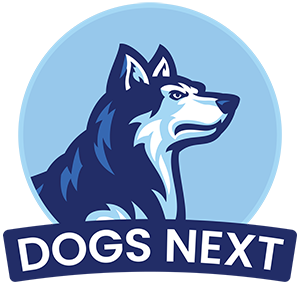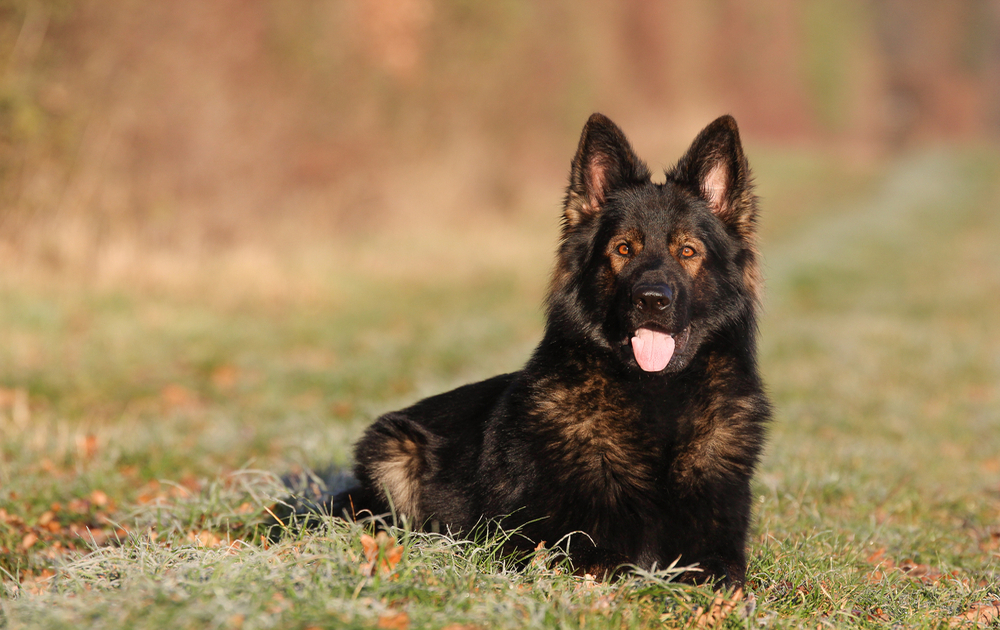DDR German Shepherds possess a distinct set of characteristics that set them apart from other German Shepherd lines.
In this exploration of their signature traits, we delve into the history, appearance, temperament, working abilities, and health considerations of these remarkable canines.
Known for their unwavering loyalty, high intelligence, and exceptional protective nature, DDR German Shepherds have gained recognition for their superior working capabilities in tracking, obedience, and guarding.
We also examine the physical attributes that contribute to their agility and strength. By understanding the unique signature traits of DDR German Shepherds, we can gain a deeper appreciation for their remarkable qualities.
Table of Contents
Overview of DDR German Shepherds
DDR German Shepherds, also known as East German Shepherds, are a specific lineage within the German Shepherd breed that originated in East Germany during the Cold War era.
These dogs were selectively bred for their exceptional working abilities and were primarily used as working dogs in various roles, including border patrol, military, and police work.
Distinctive Features and Appearance:
DDR German Shepherds possess several distinctive features that set them apart from other German Shepherd lines. One of the notable characteristics is their strong and muscular build. These dogs have a robust bone structure and well-developed musculature, which contributes to their impressive strength and endurance.
In terms of size, DDR German Shepherds typically fall within the average range for German Shepherds. Males usually stand between 24 to 26 inches (61 to 66 cm) at the shoulder, while females tend to be slightly smaller, ranging from 22 to 24 inches (56 to 61 cm). They have a proportionate body with a deep chest and a straight, sturdy back.
DDR German Shepherds are easily recognized by their distinct coat. They have a dense double coat that provides insulation and protection in various weather conditions. The outer coat is thick and harsh, while the undercoat is soft and dense.
Their coat color commonly includes variations of black, sable, or dark gray, and they often have a black mask on their face.
Another distinguishing feature is their dark pigmentation, which extends beyond the coat. DDR German Shepherds often have dark-colored eyes and black pigment on their lips, nose, and paw pads. This rich pigmentation adds to their imposing and striking appearance.
In terms of temperament, DDR German Shepherds are known for their exceptional loyalty, intelligence, and protective nature. They form strong bonds with their families and are highly devoted and watchful.
Their intelligence makes them highly trainable and versatile, excelling in various working roles such as search and rescue, tracking, obedience, and protection work.
Temperament and Personality Traits
DDR German Shepherds are renowned for their exceptional temperament and personality traits, which make them highly sought after as both working dogs and loyal companions. Let’s explore some of their key characteristics in detail.
Loyalty and Devotion:
One of the hallmark traits of DDR German Shepherds is their unwavering loyalty and devotion to their families. These dogs form deep bonds and are known to be fiercely protective of their loved ones. Their loyalty extends beyond mere obedience; they have an innate desire to please their owners and will go to great lengths to ensure their safety and well-being.
Intelligence and Trainability:
DDR German Shepherds are highly intelligent and possess a keen sense of awareness. They have a remarkable ability to quickly grasp new commands and tasks, making them highly trainable.
Their intelligence, coupled with their strong work ethic, makes them excel in various training disciplines. Whether it’s obedience training, search and rescue work, or complex tasks in law enforcement, DDR German Shepherds are quick learners and eager to please.
Protective Nature:
DDR German Shepherds have a natural protective instinct, making them exceptional guard dogs. They have a heightened sense of alertness and are constantly aware of their surroundings.
This protective nature, combined with their loyalty, makes them fiercely defensive when it comes to their families or territories. They are known to be highly vigilant, and their mere presence acts as a deterrent to potential threats.
Courage and Fearlessness:
DDR German Shepherds are renowned for their courage and fearlessness, which makes them well-suited for high-pressure and demanding roles.
Whether it’s facing challenging terrain during search and rescue missions or confronting dangerous situations in law enforcement, these dogs exhibit tremendous bravery. They remain composed under pressure and are willing to put themselves in harm’s way to protect their handlers or loved ones.

Physical Traits of DDR German Shepherds
DDR German Shepherds possess a distinct set of physical traits that contribute to their overall appearance and working capabilities. From their muscular build to their unique coat, these characteristics make them easily recognizable and highly functional as working dogs.
Let’s explore the physical traits of DDR German Shepherds in more detail.
Muscular Build and Strong Bone Structure:
DDR German Shepherds are known for their impressive muscular build and strong bone structure. These dogs have a solid and robust physique, with well-developed muscles that give them the strength and endurance needed for demanding tasks.
Their sturdy bone structure provides the foundation for their athleticism and ensures their ability to perform in various working roles.
Coat and Pigmentation:
DDR German Shepherds have a distinctive double coat that serves both functional and aesthetic purposes. The outer coat is thick, harsh, and weather-resistant, providing protection from the elements.
Their dense undercoat provides insulation and keeps them comfortable in different climates. This coat combination enables them to work in various environments and adapt to changing weather conditions.
In terms of color, DDR German Shepherds commonly exhibit variations of black, sable, or dark gray. Additionally, they often have a black mask on their face, which enhances their striking appearance.
Their coat color, along with their dark pigmentation, extends beyond the fur. DDR German Shepherds typically have dark-colored eyes, black pigment on their lips, nose, and paw pads, giving them a distinct and imposing presence.
Powerful and Agile Movement:
DDR German Shepherds are known for their powerful and agile movement. They have a smooth and balanced gait, covering ground effortlessly.
Their strong, well-muscled limbs and flexible joints allow them to move with precision and grace, whether it’s during intense physical activities or quick changes in direction. This athleticism contributes to their versatility and ability to perform in various working roles.
Overall Structure:
DDR German Shepherds have a proportionate body structure that is well-balanced. They have a deep chest, providing ample room for lung capacity, which aids in endurance and stamina.
Their back is straight and sturdy, allowing them to maintain stability while performing physically demanding tasks. The combination of their physical traits ensures that DDR German Shepherds have the necessary agility, strength, and endurance to excel in their roles.
Physical characteristics of DDR German Shepherds contribute to their distinctive and outstanding look. Their bulky double coat, powerful bones, black coloration, quick reflexes, and muscular physique all contribute to their effectiveness as working dogs.
These physical characteristics make DDR German Shepherds a unique and in-demand breed in a variety of areas, including police enforcement, search and rescue, and personal security, along with their great disposition and trainability.
Working Abilities of DDR German Shepherds
Tracking and Search Skills:
DDR German Shepherds have a remarkable sense of smell and are highly skilled in tracking and search operations. With their acute scenting abilities, they can follow scent trails over long distances, making them invaluable in search and rescue missions. Their focus, determination, and ability to distinguish scents aid in locating missing persons or detecting hidden objects.
Obedience and Utility Work:
DDR German Shepherds are highly obedient and excel in utility work. They have an innate desire to please their handlers and demonstrate exceptional focus and concentration.
Their intelligence and trainability enable them to master complex commands and perform tasks with precision. Whether it’s obedience trials, utility work, or tasks requiring problem-solving skills, DDR German Shepherds consistently exhibit their versatility and reliability.
Guarding and Protection Capabilities:
One of the notable working abilities of DDR German Shepherds is their natural guarding and protection instincts. They possess a strong protective nature and an unwavering loyalty to their families and territories.
DDR German Shepherds are vigilant and quick to respond to potential threats. Their ability to assess situations, make split-second decisions, and act fearlessly in the face of danger makes them excellent guard dogs and protectors.
Versatility in Working Roles:
DDR German Shepherds’ working abilities extend to various fields, including law enforcement, military, and personal protection. They are often employed in police departments for tasks such as tracking suspects, detecting narcotics, or apprehending criminals.
Their physical strength, endurance, and agility make them suitable for physically demanding roles. Additionally, their trainability and intelligence make them well-suited for specialized training, such as bomb detection or search and rescue operations.
Collaboration and Teamwork:
DDR German Shepherds have a natural inclination towards teamwork and collaboration. They thrive in working partnerships with their handlers, demonstrating exceptional communication and coordination.
This teamwork allows them to perform effectively in high-pressure situations and contribute to the overall success of their working missions.
Health Considerations for DDR German Shepherds
Ensuring the well-being and longevity of DDR German Shepherds requires careful attention to their health considerations.
1. Hip and Elbow Dysplasia:
DDR German Shepherds, like many large dog breeds, are prone to hip and elbow dysplasia. These conditions involve abnormal development of the hip and elbow joints, leading to discomfort, lameness, and potentially arthritis.
Regular screening and evaluation of breeding dogs for these conditions are crucial to reduce the risk of passing on these genetic traits to future generations.
2. Degenerative Myelopathy (DM):
DM is a progressive neurological disease that affects the spinal cord of DDR German Shepherds. It typically manifests as weakness in the hind limbs, leading to difficulties in mobility and coordination.
Although there is no cure for DM, early detection through genetic testing can help in managing the condition and providing supportive care to affected dogs.
3. Gastric Dilatation-Volvulus (GDV):
Also known as bloat, GDV is a serious and potentially life-threatening condition that affects deep-chested breeds like DDR German Shepherds.
It involves the twisting of the stomach, leading to a blockage in blood flow and gas buildup. Immediate veterinary attention is necessary if symptoms like restlessness, abdominal distension, or unproductive retching are observed.
4. Allergies and Skin Conditions:
DDR German Shepherds may be prone to allergies and various skin conditions, including dermatitis and hot spots. Environmental allergens, food sensitivities, or parasites can contribute to these issues.
Regular grooming, maintaining a healthy diet, and addressing any signs of skin irritation promptly are essential in managing these conditions.
5. Eye Problems:
Certain eye conditions can occur in DDR German Shepherds, including progressive retinal atrophy (PRA) and cataracts. These conditions can lead to vision impairment or loss if left untreated. Regular eye examinations by a veterinary ophthalmologist can aid in early detection and appropriate management of these issues.

Breeding and Training Practices
Breeding and training practices play a crucial role in shaping the characteristics and abilities of DDR German Shepherds. Responsible breeding practices aim to preserve and enhance the desirable traits of the breed while minimizing the risk of passing on genetic health issues.
Breeding Practices:
- Selective Breeding: Responsible breeders focus on selecting breeding pairs with desirable traits, including temperament, working abilities, and physical soundness. They carefully assess the health history, genetic background, and performance records of potential breeding dogs to ensure the preservation and improvement of the breed.
- Health Testing: Health testing is a critical aspect of breeding practices. Screening for common genetic health issues, such as hip and elbow dysplasia, is important to minimize the risk of passing on these conditions to offspring. Regular veterinary check-ups and genetic testing can help identify potential health concerns and make informed breeding decisions.
Training Practices:
- Early Socialization: Proper socialization is crucial during the early stages of a DDR German Shepherd’s life. Exposing them to various people, animals, environments, and stimuli helps them develop confidence, adaptability, and appropriate social behavior. Early socialization sets the foundation for their overall temperament and reduces the likelihood of behavioral problems later in life.
- Positive Reinforcement: Positive reinforcement training methods, such as rewards, praise, and treats, are highly effective in training DDR German Shepherds. They respond well to clear and consistent communication, making it essential to use positive reinforcement to motivate and reinforce desired behaviors. Harsh training techniques or punishment should be avoided, as they can undermine trust and hinder their learning process.
- Specialized Training: DDR German Shepherds excel in various working roles due to their intelligence, trainability, and natural abilities. Specialized training in areas such as tracking, obedience, search and rescue, and protection work can help harness their potential. Professional trainers who specialize in working dogs can provide tailored training programs to maximize their working capabilities.
Comparisons with Other German Shepherd Lines
When discussing DDR German Shepherds, it’s important to consider their distinctions in comparison to other German Shepherd lines, such as West German and American lines.
While all German Shepherds share common ancestry, each line has unique characteristics shaped by their breeding objectives and regional influences. Here are some key points of comparison:
1. Temperament and Working Abilities: DDR German Shepherds are known for their loyalty, intelligence, and protective nature. They excel in working roles, particularly in tasks such as tracking, obedience, and protection work.
West German lines are often bred for their versatile working abilities, with a focus on precision and agility. American lines may emphasize show or sport qualities, including trainability and adaptability.
2. Physical Appearance: DDR German Shepherds have a robust, muscular build and a dense double coat, which provides protection in various weather conditions.
West German lines are often characterized by a more angulated rear end and a focus on overall balance. American lines may exhibit a range of physical appearances, influenced by their show or sport breeding objectives.
3. Drive and Energy Level: DDR German Shepherds tend to possess a high drive and energy level, making them well-suited for demanding tasks.
West German lines may have a similar drive but with varying energy levels. American lines can display a range of drives and energy levels, depending on their breeding purpose.
4. Health Considerations: DDR German Shepherds, West German lines, and American lines can all be susceptible to certain health issues.
Breeding practices and focus on health testing may differ. Responsible breeders across all lines prioritize health testing to minimize the risk of passing on genetic health conditions.
5. Breeding Objectives: DDR German Shepherds were selectively bred in East Germany for working capabilities, primarily focused on military and police work. West German lines have been bred for their working abilities and overall versatility.
American lines may have a broader range of breeding objectives, including show, sport, and companion qualities.
Famous DDR German Shepherds
DDR German Shepherds have made notable contributions in various fields, showcasing their exceptional working abilities and versatility. Here are a few examples of famous DDR German Shepherds:
- “Vopo von der Maineiche”: Vopo was a highly acclaimed DDR German Shepherd known for his exceptional tracking skills. He gained recognition for his successful search and rescue missions, often locating missing persons in challenging terrains.
- “Irk von Arminius”: Irk was a renowned DDR German Shepherd who excelled in Schutzhund trials. He achieved numerous titles and accolades, demonstrating his exceptional obedience, tracking, and protection capabilities.
- “Palme vom Wildsteiger Land”: Palme was a highly influential DDR German Shepherd who produced several exceptional offspring. His progeny went on to excel in various working disciplines, including police work, search and rescue, and competitive obedience.
- “Snickers v.d. Deutschen Arbeit”: Snickers was a celebrated DDR German Shepherd known for his incredible tracking abilities. He made significant contributions in the field of search and rescue, successfully locating missing individuals in difficult terrains and adverse conditions.
- “Ingo von Rudingen”: Ingo was a well-known DDR German Shepherd who achieved recognition for his exemplary performance in Schutzhund trials. He demonstrated exceptional obedience, agility, and protective instincts, earning him numerous titles and accolades.
Frequently Asked Questions
Q1: Are DDR German Shepherds suitable for families with children?
Ans: Yes, DDR German Shepherds can be great family dogs. They are known for their loyalty and protective nature, which makes them excellent companions and guardians for children.
Q2: Do DDR German Shepherds require extensive exercise?
Ans: DDR German Shepherds are an active breed and thrive with regular exercise. Daily physical activity, such as walks, runs, or playtime, helps keep them mentally and physically stimulated.
Q3: Are DDR German Shepherds easy to train?
Ans: DDR German Shepherds are highly intelligent and trainable. Their willingness to learn and their strong work ethic make them quick learners. Positive reinforcement training methods are especially effective with this breed.
Q4: Do DDR German Shepherds have any specific grooming needs?
Ans: DDR German Shepherds have a dense double coat that requires regular brushing to prevent matting and maintain its health. They typically shed moderately throughout the year, with heavier shedding during seasonal coat changes.
Q5: Are DDR German Shepherds prone to any health issues?
Ans: DDR German Shepherds, like other large breeds, can be susceptible to hip and elbow dysplasia. It’s important to choose a reputable breeder who conducts health testing to minimize the risk of genetic health issues. Regular veterinary check-ups and a balanced diet can help promote their overall health and well-being.
Conclusion
DDR German Shepherds possess a unique set of characteristics and traits that set them apart from other German Shepherd lines. Their signature traits, including loyalty, intelligence, protective nature, and courage, make them exceptional working dogs and devoted companions.
Their physical attributes, such as their muscular build and dense coat, further contribute to their functionality and distinctive appearance.
Through responsible breeding practices, careful training, and attention to their health considerations, DDR German Shepherds continue to leave a lasting impact in various fields.
Whether serving in law enforcement, search and rescue, or as beloved family pets, DDR German Shepherds embody the qualities that make them truly remarkable canines.

I’m David, an expert contributor and writer, with two furry friends of my own, I know the challenges of raising and caring for dogs. From training to nutrition and health, my goal is to provide valuable insights and advice to help create strong bonds and happy, healthy lives. Find me in Twitter.




